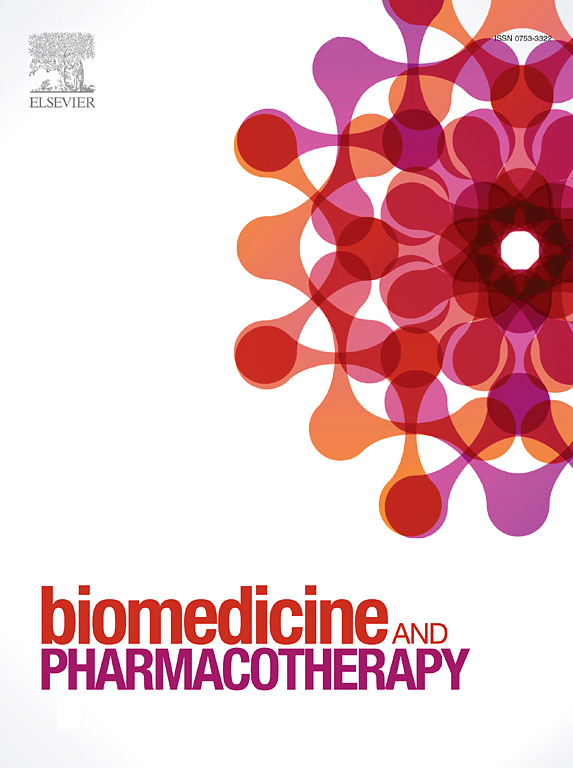通过激活胰岛素途径,单糖可改善 III 型半乳糖血症动物模型的症状。
IF 6.9
2区 医学
Q1 MEDICINE, RESEARCH & EXPERIMENTAL
引用次数: 0
摘要
III 型半乳糖血症的特征是由于缺乏 UDP-半乳糖-4-epimerase(GALE)基因而无法代谢半乳糖,该基因可催化 UDP-半乳糖和 UDP-葡萄糖的相互转化。此外,GALE 还能相互转化 UDP-N-乙酰半乳糖胺和 UDP-N-乙酰葡糖胺。生物大分子的糖基化需要这四种糖。GALE 基因缺失被认为是致命的,所有描述的患者都携带低形突变。症状多种多样,从轻微到严重不等,且没有有效的治疗方法。我们以前曾为 III 型半乳糖血症建立了一个 elegans Caenorhabditis 模型,该模型携带 GALE 基因同源物的低形变突变。在该模型中,我们观察到症状随饮食而变化。这项工作的目的是确定哪些饮食代谢物可减轻 III 型半乳糖血症的症状。为了确定负责的分子,我们使用了III型半乳糖血症的优雅小鼠模型和小鼠模型,以测试哺乳动物对治疗的反应是否一致,从而对患者进行干预。我们发现,饮食中的高浓度单糖对优雅小鼠模型产生了有益影响。这种干预措施通过激活胰岛素途径增加了 GALE-1 的表达,这可能是携带低形态突变的动物症状减轻的原因。单糖治疗后 GALE 基因表达的增加在哺乳动物中也得到了保留,如果在人类中得到保留,单糖治疗结合 GALE 表达的监测可被纳入 III 型半乳糖血症患者的治疗中。本文章由计算机程序翻译,如有差异,请以英文原文为准。
Monosaccharides improve symptoms of an animal model for type III galactosemia, through the activation of the insulin pathway
Type III galactosemia is characterized by the inability to metabolize galactose due to deficiency of the UDP-galactose-4-epimerase (GALE) gene, which catalyzes the interconversion of UDP-Galactose and UDP-Glucose. Additionally, GALE interconverts UDP-N-Acetylgalactosamine and UDP-N-Acetylglucosamine. These four sugars are needed for glycosylation of biomolecules. GALE deletion is considered lethal, and all described patients carry hypomorphic mutations. Symptoms are diverse and can range from mild to severe, without effective treatment. We have previously generated a Caenorhabditis elegans model for type III galactosemia, which carries a hypomorphic mutation in the GALE gene homologue. In this model, we observed that the symptoms varied depending on the diet. The aim of this work is to identify which dietary metabolites might alleviate the symptoms of type III galactosemia. To identify the molecules responsible, we used a C. elegans model of type III galactosemia and a mouse model to test whether the respond to the treatment is conserved in mammals and thus could be a putative intervention in patients.
We found that high levels of monosaccharides in the diet is responsible for the beneficial effect in the C. elegans model. This intervention generates an increase of gale-1 expression through activation of the insulin pathway which may explain the reduction of the symptoms in animals carrying hypomorphic mutations. The increase of the GALE gene expression after monosaccharides treatment is also conserved in mammals and if maintained in humans, monosaccharide treatment combined with monitorization of GALE expression could be included in the management of patients with type III galactosemia.
求助全文
通过发布文献求助,成功后即可免费获取论文全文。
去求助
来源期刊
CiteScore
11.90
自引率
2.70%
发文量
1621
审稿时长
48 days
期刊介绍:
Biomedicine & Pharmacotherapy stands as a multidisciplinary journal, presenting a spectrum of original research reports, reviews, and communications in the realms of clinical and basic medicine, as well as pharmacology. The journal spans various fields, including Cancer, Nutriceutics, Neurodegenerative, Cardiac, and Infectious Diseases.

 求助内容:
求助内容: 应助结果提醒方式:
应助结果提醒方式:


